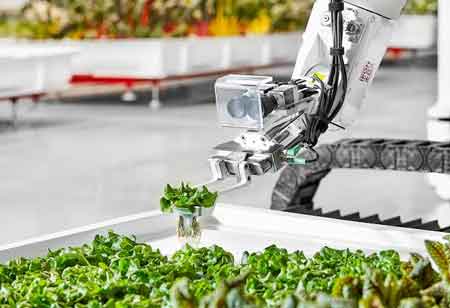THANK YOU FOR SUBSCRIBING
Be first to read the latest tech news, Industry Leader's Insights, and CIO interviews of medium and large enterprises exclusively from Food and Beverage Tech Review
Can AR and 3D Printing Justify the Technological Developments in the Food Industry?
Manufacturers need to adapt to technological developments and apply them to their production methods as a slight malfunction can jeopardize their industry position.

By
Food and Beverages Tech Review | Wednesday, January 22, 2020
Stay ahead of the industry with exclusive feature stories on the top companies, expert insights and the latest news delivered straight to your inbox. Subscribe today.
Manufacturers need to adapt to technological developments and apply them to their production methods as a slight malfunction can jeopardize their industry position.
FREMONT, CA: Food and beverage manufacturers need long-term planning to make sure that they can meet the demands of the growing global population, as well as consumer preferences. Several manufacturers have turned to the latest technologies in order to perform seamlessly.
Thousands of factors have been affecting the way food and beverage manufacturers continue to handle the food processes. Food and beverage manufacturers need to keep up with the rapidly growing space with more efficient processing so that they can satisfy the rising population or consumer preferences and behavioral changes.
AR, for a long time now, has been a part of the everyday life of people. Since the inception of the various exciting apps and their filters, AR has grown into a prevalent,  yet more commercially accessible form of technology. In the present time, the AR market is estimated to hit billions as the industries are searching for many applications to incorporate cutting-edge technology, which fails to keep the food and beverage industry away from the influence.
yet more commercially accessible form of technology. In the present time, the AR market is estimated to hit billions as the industries are searching for many applications to incorporate cutting-edge technology, which fails to keep the food and beverage industry away from the influence.
AR has the potential to enhance the consumer experience, along with helping the manufacturers design products with labels of nutritional or recipe information displaying on it. Nevertheless, a few suppliers have decided to take a step ahead and use the technology to display a 3D view of their products to the customers before placing an order. Leveraging AR in multiple ways can help the user in increasing sales as well.
In recent times, 3D printing technology has mainly been a part of the food and beverage industry in different methods, such as packaging. It is predicted that the international revenue for the 3D printing market can rise to $21 billion in 2020.
Some organizations have made use of 3D printing to build 3D printed jelly food meals for senior citizens who face difficulty while chewing or swallowing solids. The 3D printing benefits can produce precise results, along with saving time and effort. 3D printing can offer innovative and sustainable food to the increasing population sooner faster than the traditional methods of manufacturing. Besides, it only makes use of the required amount of raw materials to produce the finished product and leaves negligible waste.
I agree We use cookies on this website to enhance your user experience. By clicking any link on this page you are giving your consent for us to set cookies. More info







